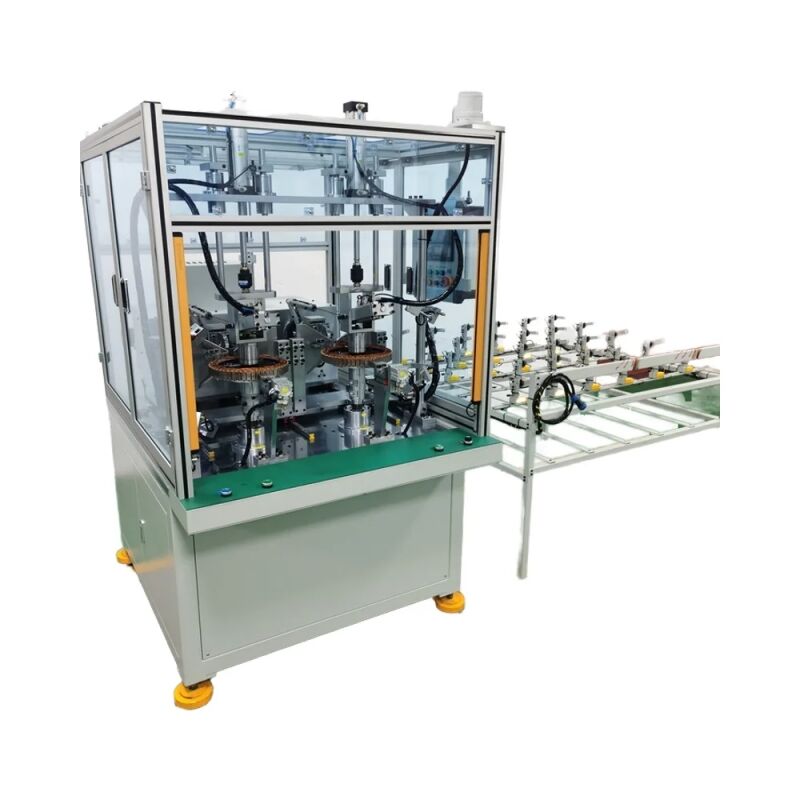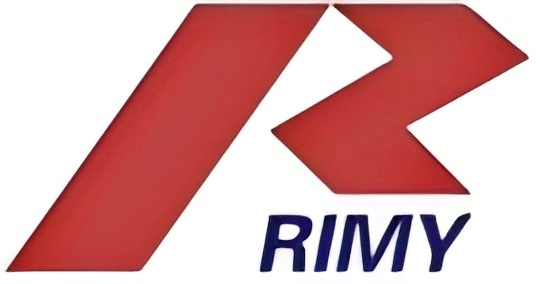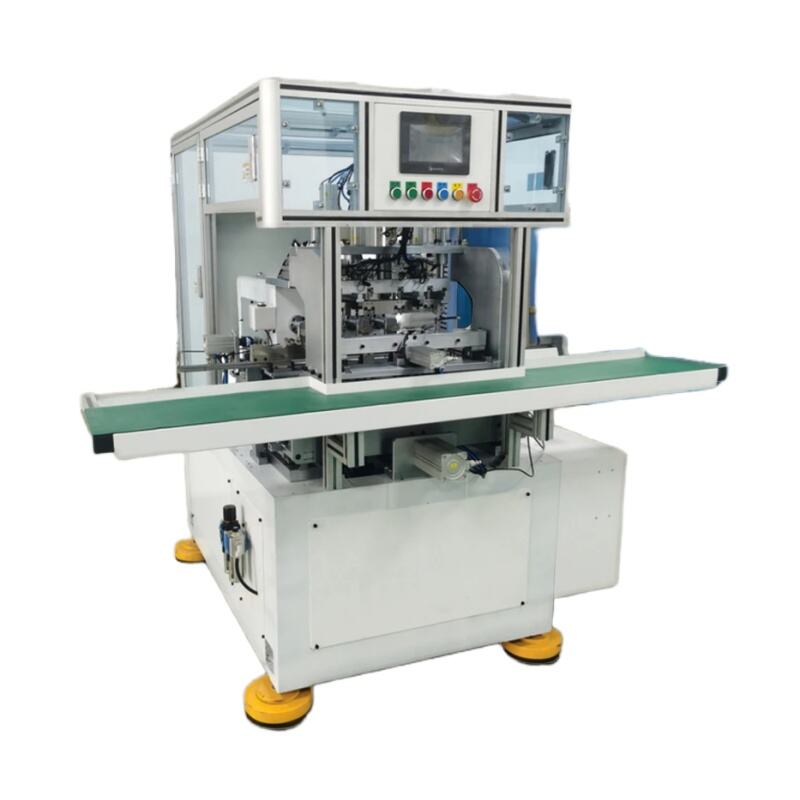Maximizing ROI with Compressor Motor Winding Machines and Production Lines
In the modern manufacturing world, compressor motor winding machines are an essential part of the production line. These machines play a crucial role in ensuring the quality and efficiency of compressors, which are integral to a wide range of industries. As plant managers look to optimize their operations and improve profitability, understanding the impact of compressor motor winding machines and production lines on ROI becomes imperative. This article explores how the strategic use of winding machines, coupled with efficient production lines, can lead to higher returns on investment.
Role of Compressor Motor Winding Machines in Manufacturing Efficiency
Compressor motor winding machines are responsible for winding the coils that power compressor motors. These machines ensure that the winding process is accurate, efficient, and consistent. A high-quality winding machine reduces the chances of errors, which can lead to motor inefficiency, increased energy consumption, and a shorter product lifespan. As plant managers look to improve their ROI, investing in reliable, high-performance winding machines becomes a critical step.
The performance of the winding machine directly impacts the operational efficiency of the compressor motor. When the winding process is optimized, it leads to more durable motors that operate efficiently, consuming less energy over time. Therefore, investing in advanced compressor motor winding machines can lead to significant savings in energy costs, maintenance, and repairs, boosting the overall ROI of the plant.

Factors Influencing the ROI of Compressor Motor Winding Machines
Efficiency of the Production Line
The efficiency of the entire production line plays a significant role in determining ROI. A compressor motor winding machine that operates at peak efficiency allows for faster production and reduces the chances of delays. More units can be produced in a shorter time, driving down production costs.
Increased efficiency also means better resource allocation. For instance, if a winding machine reduces the amount of wasted material, it can have a direct impact on cost savings. Additionally, an efficient production line ensures that there are fewer stoppages, meaning more time is spent producing, leading to higher profits. Optimizing these machines can also improve the speed and reliability of production, enabling manufacturers to meet tight deadlines and gain a competitive edge in the market.
Downtime and Maintenance Costs
Another key factor influencing ROI is downtime. Unplanned maintenance and breakdowns can significantly hurt the overall performance of a production line. The more time your machines are out of service, the less production you can achieve, and the higher your costs will be.
To combat this, plant managers should prioritize investing in high-quality, durable compressor motor winding machines that are designed to reduce downtime. Additionally, implementing a routine maintenance schedule ensures that minor issues are detected early, reducing the need for major repairs. This proactive approach minimizes downtime, keeping the production line running smoothly and ensuring better ROI.
Technological Innovations in Compressor Motor Winding Machines
The Impact of Automation on ROI
Automation has been a game-changer for the manufacturing industry, and compressor motor winding machines are no exception. Modern machines equipped with automation technology can run with minimal human intervention, increasing production capacity while maintaining a high level of precision.
Automated systems allow for quicker turnaround times, and the ability to monitor production in real-time helps reduce the chances of errors or defects. Automation also reduces labor costs, as fewer workers are needed to manage the machine. By increasing output and reducing errors, automated compressor motor winding machines directly contribute to an improved ROI for the plant.
Real-Time Data and Machine Integration
The rise of digital technology in manufacturing has brought about the use of real-time data tracking. Modern compressor motor winding machines are equipped with sensors and software that monitor performance and efficiency. These systems provide plant managers with valuable insights into the machine's operation, including data on energy consumption, production rates, and even potential maintenance needs.
Real-time data allows for proactive decision-making, ensuring that any issues are addressed before they impact the production line. Additionally, the integration of machines within a larger production system can streamline workflows, prevent bottlenecks, and improve coordination across different stages of production. All of this contributes to a higher return on investment, as it optimizes both machine and resource performance.
Financial Considerations for Investing in Compressor Motor Winding Machines
Initial Investment vs. Long-Term Savings
When considering the ROI of compressor motor winding machines, it’s essential to balance the initial investment with the long-term savings. High-performance machines may come with a higher price tag upfront, but they often lead to significant savings over time. This includes lower maintenance costs, reduced energy consumption, and less frequent machine replacements.
The savings generated from these efficiencies often outweigh the initial investment, especially in large-scale production facilities where machinery needs to run at peak performance for long hours. By choosing a machine with superior durability and efficiency, plant managers can ensure that their investment will continue to pay off over the years.
Labor Cost Reductions Through Automation
One of the biggest advantages of automated compressor motor winding machines is the reduction in labor costs. In traditional manufacturing setups, workers are needed to oversee and operate machines, which increases labor expenses. Automated machines, on the other hand, require minimal human intervention, allowing businesses to reallocate labor resources to other tasks.
Reducing the workforce needed to operate the machines does not just lower direct labor costs but also reduces the chance of human error. This leads to greater efficiency and consistency, which ultimately improves product quality. The overall result is a higher ROI, as savings from labor and error reductions outweigh the upfront costs of the machines.
Strategies for Maximizing ROI on Compressor Motor Winding Machines
Preventive Maintenance for Long-Term Performance
One of the best ways to maximize ROI is through regular, preventive maintenance. Maintenance programs are essential for keeping machines in top condition and ensuring that they operate at maximum efficiency. A comprehensive maintenance schedule that includes regular inspections, lubrication, and part replacements will reduce the likelihood of unexpected breakdowns, which can lead to costly downtime.
By keeping machines running smoothly, you can extend their lifespan, avoid major repairs, and reduce long-term costs. This will ensure that the compressor motor winding machines continue to perform well, delivering consistent ROI year after year.
Optimizing Production Efficiency
Optimizing the efficiency of your production line is another crucial strategy for improving ROI. This can be achieved by investing in energy-efficient machines, reducing material waste, and improving the overall layout of the production line. By minimizing energy consumption and ensuring that raw materials are used effectively, plant managers can reduce costs and increase profit margins.
Using automated systems and data tracking technologies can further enhance efficiency. These systems can fine-tune the production process, ensuring that machines operate at their optimal capacity and that resources are utilized in the most efficient manner possible.
FAQ
How do I calculate the ROI for my compressor motor winding machines?
To calculate ROI, you need to consider the total cost of the machine, including purchase price, installation, maintenance, and energy usage. Then, assess the revenue generated from increased output, reduced downtime, and improved product quality. The formula for ROI is: (Total savings or additional revenue - Total investment) / Total investment.
What are the benefits of automated compressor motor winding machines?
Automated compressor motor winding machines increase production speed and reduce human error. They also lower labor costs by reducing the need for manual intervention. The automation leads to higher efficiency, consistent product quality, and ultimately a higher ROI due to increased output and reduced downtime.
How does preventive maintenance impact ROI?
Preventive maintenance reduces unexpected downtime and extends the lifespan of the machines. Regularly maintained machines operate more efficiently and require fewer repairs, which lowers long-term costs and contributes to a higher ROI by ensuring continuous, high-quality production.
How can energy-efficient machines improve ROI?
Energy-efficient machines consume less power, which directly reduces operating costs. By lowering energy bills while maintaining the same production levels, energy-efficient machines improve ROI. Additionally, many modern energy-efficient models also come with features that reduce wear and tear, resulting in fewer repairs and maintenance needs.
Table of Contents
- Role of Compressor Motor Winding Machines in Manufacturing Efficiency
- Factors Influencing the ROI of Compressor Motor Winding Machines
- Technological Innovations in Compressor Motor Winding Machines
- Financial Considerations for Investing in Compressor Motor Winding Machines
- Strategies for Maximizing ROI on Compressor Motor Winding Machines
- FAQ

